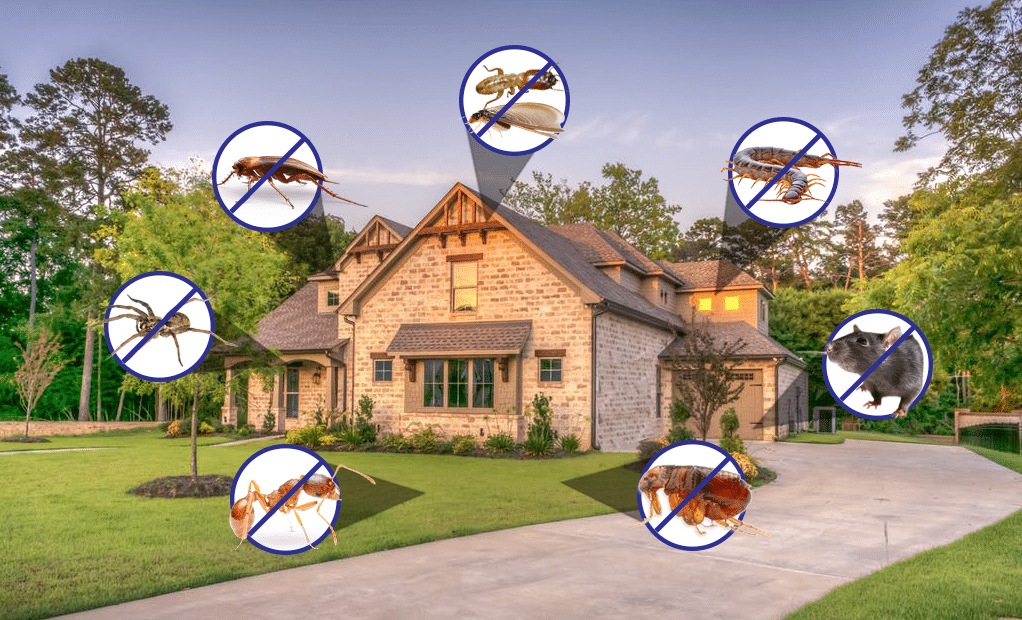When it comes to household pests, few creatures are as universally dreaded as cockroaches. Known for their ability to thrive in almost any environment, cockroaches are not only a nuisance but also pose potential health risks. Among the various species of roaches, the German cockroach and the American cockroach are two of the most common offenders. But how do they differ, and which one is the real pest?
The German Cockroach: The Silent Invader
- Why It’s Common: The German cockroach is the most common cockroach species found in homes, particularly in kitchens and bathrooms.
- What to Look For: This small, light brown roach has two dark stripes running down its thorax, giving it a distinctive appearance. Adult German cockroaches are typically about 1/2 to 5/8 inch long, making them easy to overlook. They are quick, nocturnal creatures that prefer warmth and moisture, making them particularly attracted to food preparation areas.
- Why It’s a Problem: German cockroaches are notorious for their ability to reproduce quickly. A single female can produce hundreds of offspring in her lifetime, leading to fast infestations. These cockroaches also carry pathogens that can trigger allergies and asthma in sensitive individuals, making them a significant health concern.
The American Cockroach: The Large, Unwanted Guest
- Why It’s Common: The American cockroach, while less likely to invade homes than the German cockroach, is still a major pest found in basements, crawl spaces, and sewers.
- What to Look For: Unlike the German cockroach, the American cockroach is much larger, typically measuring between 1.5 to 2 inches long. It has a reddish-brown body with a pale yellow band around the edges of its thorax. Although they’re larger and more noticeable, American cockroaches tend to avoid human interaction and prefer dark, damp areas like basements or garbage areas.
- Why It’s a Problem: American cockroaches are more likely to be found in areas with excess moisture, such as bathrooms, kitchens, and crawl spaces. Though they do not reproduce as quickly as German cockroaches, they can still cause a significant infestation if left unchecked. Like the German roach, American cockroaches also carry diseases and allergens, though they are less of a health risk than their smaller counterparts.
Key Differences: German Roach vs. American Roach
- Size: One of the most noticeable differences between the two species is their size. German cockroaches are much smaller than American cockroaches. This makes the German cockroach harder to detect but equally capable of hiding in cracks and crevices in your kitchen or bathroom.
- Habitat: German cockroaches tend to favor areas where food and water are abundant, such as kitchens, pantries, and bathrooms. On the other hand, American cockroaches prefer damp, dark areas like basements, sewers, and garbage bins.
- Reproduction: The German cockroach is more prolific, with a higher reproductive rate. This means infestations can spiral out of control more quickly compared to the American cockroach. A single German cockroach can lay dozens of eggs at a time, while American cockroaches produce fewer eggs.
- Behavior: Both types of cockroaches are nocturnal and will scurry away at the first sign of light. However, German cockroaches are more likely to live in close proximity to humans, whereas American cockroaches tend to stay in more secluded, less trafficked areas.
How to Handle a Cockroach Infestation
- Why It’s Important: Cockroaches are persistent and adaptable pests that require a multi-faceted approach for effective control.
- What to Do:
- Seal Entry Points: Whether you’re dealing with German or American cockroaches, sealing cracks and gaps in your home is essential to keeping them out. Pay attention to areas around windows, doors, pipes, and vents.
- Keep Your Home Clean: Cockroaches are attracted to food and moisture. Regular cleaning of kitchen counters, floors, and bathrooms, along with proper food storage, can help reduce the attraction for these pests.
- Eliminate Moisture Sources: Cockroaches, especially the American species, are drawn to areas with excess moisture. Fix leaking pipes, reduce humidity with dehumidifiers, and eliminate standing water.
- Use Baits and Traps: For smaller infestations, roach baits and traps can help reduce the population. These products attract cockroaches and then poison or trap them.
- Contact Pest Control Professionals: If you’re facing a large infestation or persistent problem, it’s best to call in the experts. Local pest control specialists near me can assess the situation, identify the species of cockroach, and implement a targeted control plan to eliminate the infestation.
Conclusion
Both German and American cockroaches are pests that can cause significant problems if left unchecked. While the German cockroach tends to be the more prolific and widespread of the two, American cockroaches can still pose a threat to your home, particularly in moist, dark areas. Understanding the differences between these two species can help you take the right steps to prevent or control an infestation. By maintaining cleanliness, sealing entry points, and using pest control methods, you can protect your home from these unwelcome invaders. If the problem persists, professional pest control services can provide effective solutions to keep your home pest-free.

